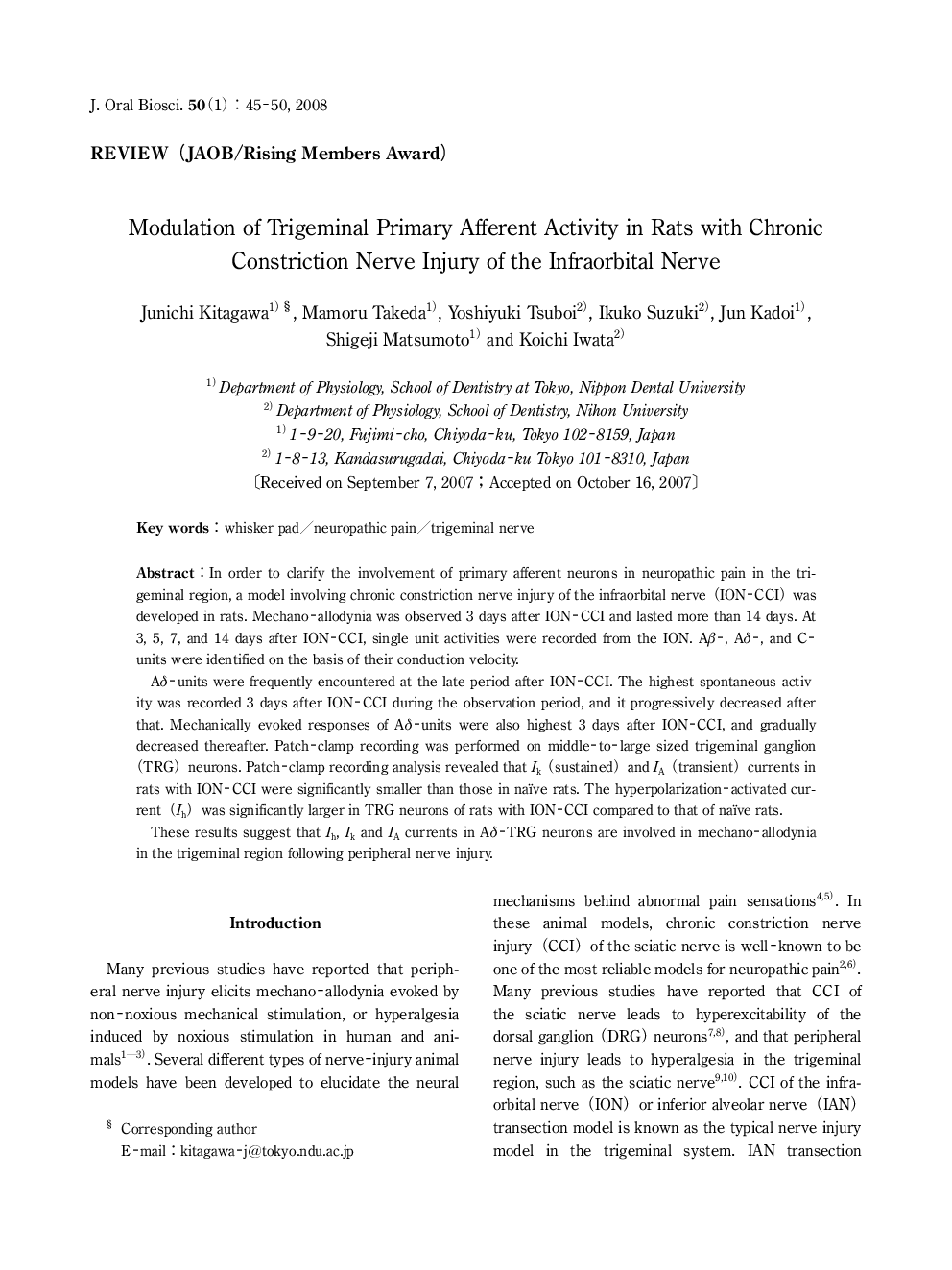| Article ID | Journal | Published Year | Pages | File Type |
|---|---|---|---|---|
| 2777068 | Journal of Oral Biosciences | 2008 | 6 Pages |
In order to clarify the involvement of primary afferent neurons in neuropathic pain in the trigeminal region, a model involving chronic constriction nerve injury of the infraorbital nerve (ION-CCI) was developed in rats. Mechano-allodynia was observed 3 days after ION-CCI and lasted more than 14 days. At 3, 5, 7, and 14 days after ION-CCI, single unit activities were recorded from the ION. Aβ-, Aδ-, and C-units were identified on the basis of their conduction velocity.Aδ-units were frequently encountered at the late period after ION-CCI. The highest spontaneous activity was recorded 3 days after ION-CCI during the observation period, and it progressively decreased after that. Mechanically evoked responses of Aδ-units were also highest 3 days after ION-CCI, and gradually decreased thereafter. Patch-clamp recording was performed on middle-to-large sized trigeminal ganglion (TRG) neurons. Patch-clamp recording analysis revealed that Ik (sustained) and IA (transient) currents in rats with ION-CCI were significantly smaller than those in naïve rats. The hyperpolarization-activated current (Ih) was significantly larger in TRG neurons of rats with ION-CCI compared to that of naïve rats.These results suggest that Ih, Ik and IA currents in Aδ-TRG neurons are involved in mechano-allodynia in the trigeminal region following peripheral nerve injury.
